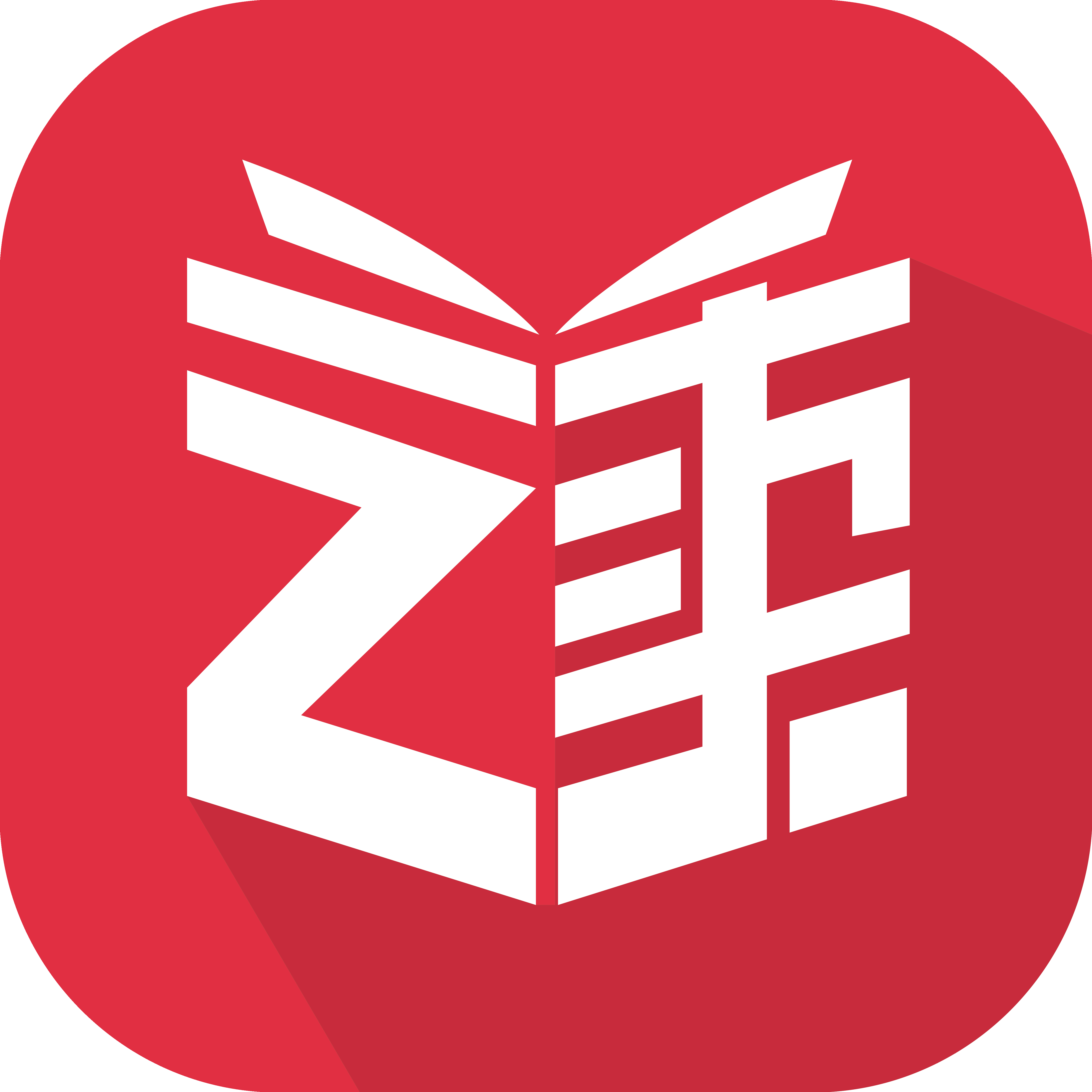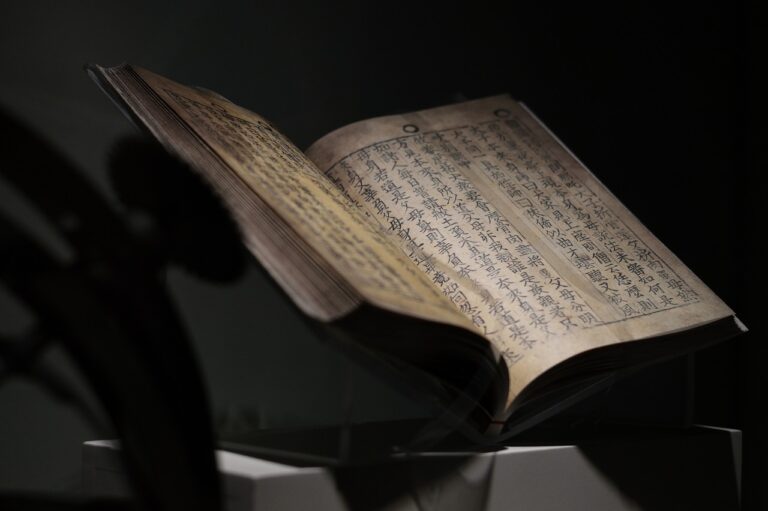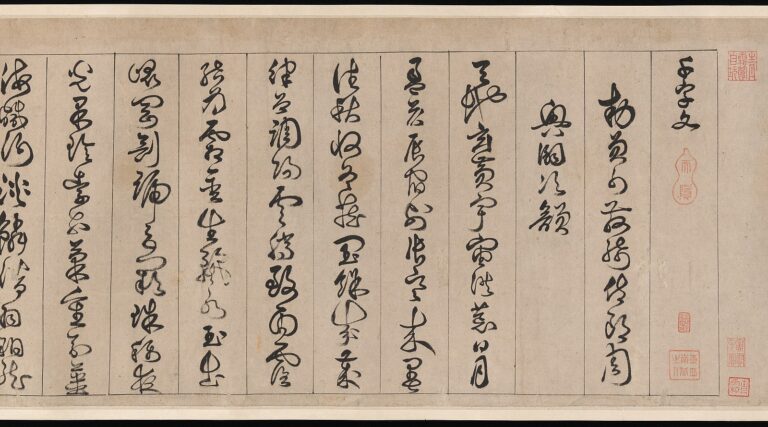How to Buy a Train Ticket in China
Are you taking the train in China and need tickets? Are you unsure how to buy train tickets in China? In this lesson, we will learn all about it.
To purchase a train ticket in Mainland China, you can go to any railway station a maximum of 58 days ahead of departure. Unfortunately, in many places it is difficult to buy tickets using only English, so let’s learn how to say “I want to buy a train ticket” in Chinese.
You can also use a numeral-classifier compound in the sentence to express how many tickets you want.
“张 [zhāng]” is the classifier for flat objects, like sheets of paper. To express the number of tickets wanted, we use “number+张”. Here are some examples of how you can use 张.
Ok, now the staff knows how many train tickets you want. But you have to tell them when and where you want to go, right? Let’s see how you do that!
Let’s take a quick look at some of the grammar structures in the above sentence.
从[cóng]~到[dào]~ From~to~
The expression 从~到 (from..to) can be used for both for time and places, to express e.g.: from one place to another, from one time to another.
Examples
- 从中国到美国 / cóng Zhōngguó dào Měiguó / from China to America
- 从1点到5点 / cóng yīdiǎn dào wǔdiǎn / from 1 to 5 o’clock
You can read more about this structure on the grammar wiki
越[yuè]~越[yuè]~ the more .. the more
This construction is used to express that one change causes something else to also change.
Examples
- 越长越大 / yuè zhǎng yuè dà / bigger and bigger
- 越来越美 / yuè lái yuè měi / more and more beautiful
Read more on this structure on the grammar wiki
The above example can be used when you don’t know the train timetable, to let the staff give you some options for departure time. If you know the timetable however, you can tell staff the correct time of course. In that situation, you can say like this:
硬卧[yìng wò] is short for 硬席卧铺[yìng xí wò pù], which is a sleeper train ticket class with a hard bunk bed. China is very big, and if you want to take a train from Guangxi Nanning to Beijing it will be take around 28 hours, so it’s better to have a bed to sleep in. The 硬卧 also has three types, which are 上铺[shàng pù] (upper bunk), 中铺[zhōng pù] (middle bunk), 下铺[xià pù] (lower bunk).
There are a lot of seat classes in China, let’s have a look.
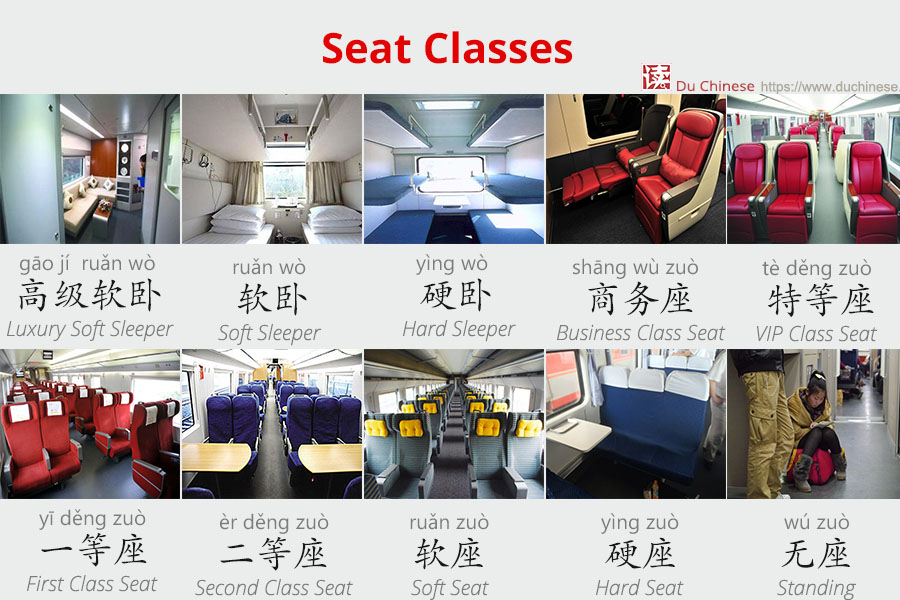
Ok! Now we can say the time, the destination and the type of seat we want! But we still cannot buy a ticket! Why? Because we have to show our passport or identity card. In China, your name and your passport number will be printed on the ticket, and only the person on the ticket can ride the train.
Now we know all we need to know! Let’s summarize:
Finally you can get your ticket!
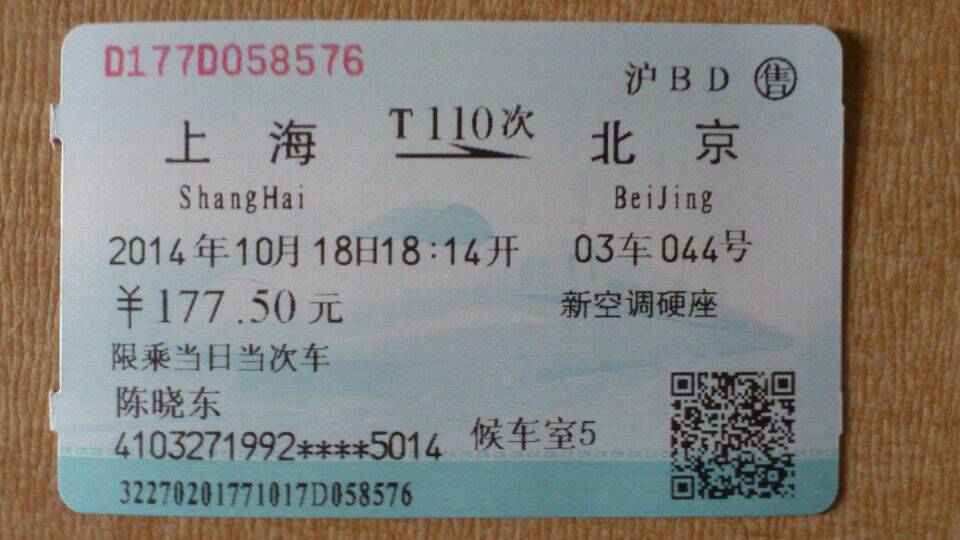
But, oh no! The ticket is entirely in Chinese!! How do you read it? Let’s have a look.
- D1770058576 / Ticket Number
- 上海 / Shànghǎi / Departure Station
- T110次 / T110 cì / Train Number
- 北京 / Běijīng / Arrival Station
- 2014年10月18日 18:14开 / 2014nián 10yuè 18rì 18:14kāi / Departure Year.Month.Date.Hour
- 03车044号 / 03 chē 044 hào / Seat Number
- 177.50元 / 177.50yuán / Price(CNY)
- 新空调硬座 / xīnkōngtiáo yìngzuò / Class
- 限乘当日当次车 / xiàn chéng dāngrì dāngcì chē / Rule (“Only valid for this date and this train”)
- 陈晓东 / Chén xiǎo dōng / Passenger’s Name
- 4103271992****5014 / Passenger’s Passport Number
- 候车室5 / hòuchēshì 5 / Waiting Room
Now you have your ticket and can get on the right train!
Have a nice trip!
This is the accompanying blog post for our newbie lesson “Buying Train Tickets“.
